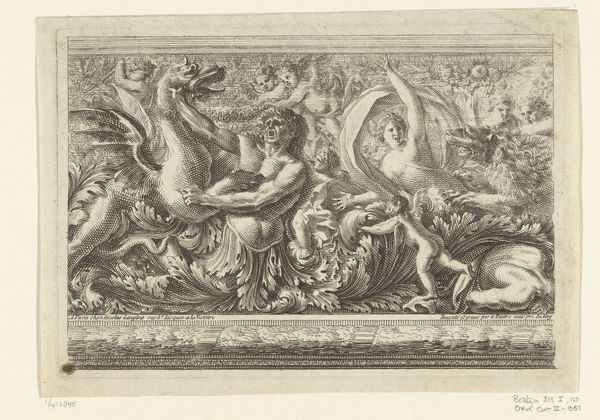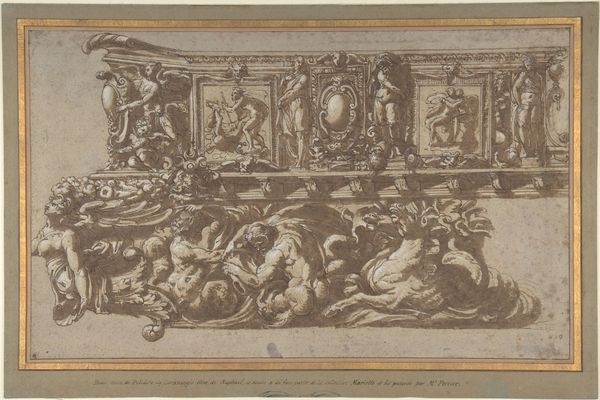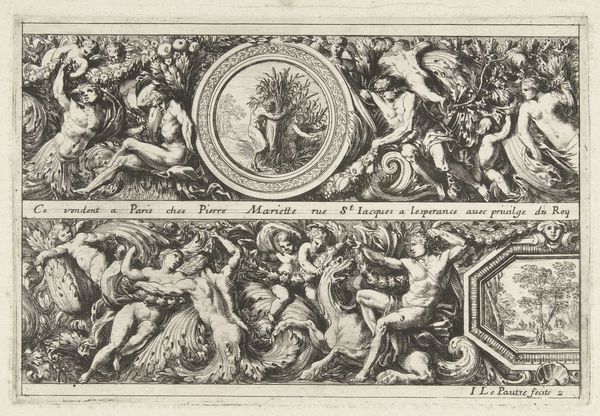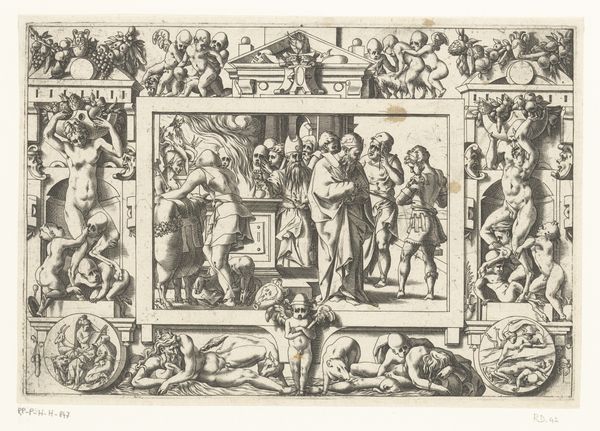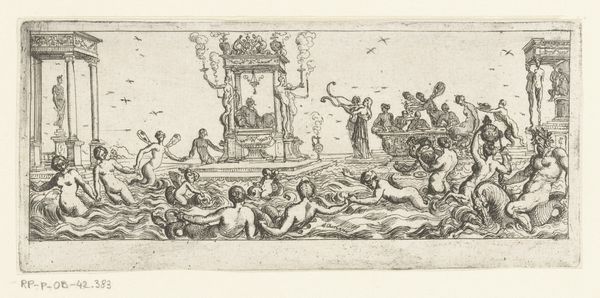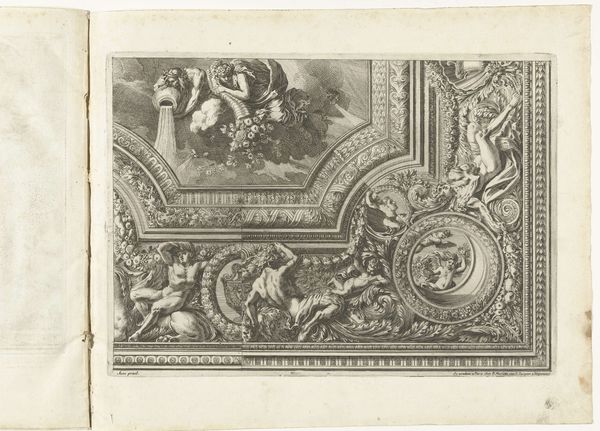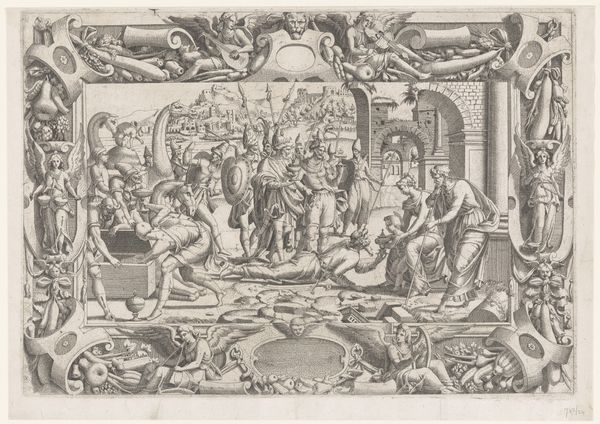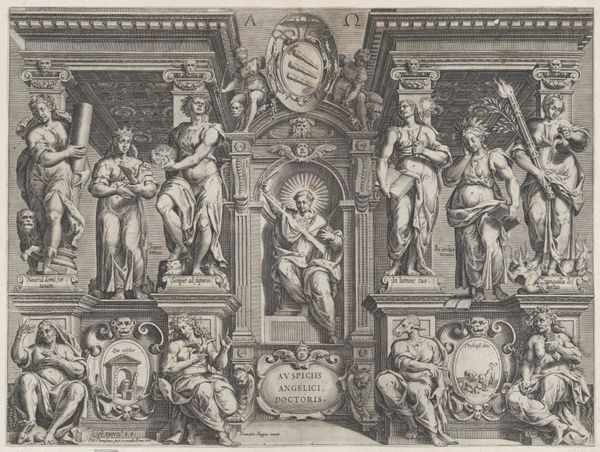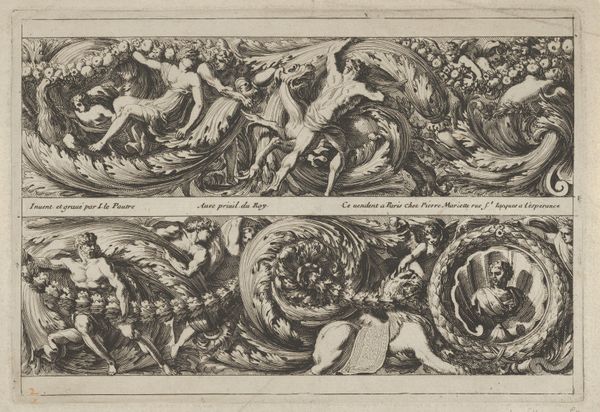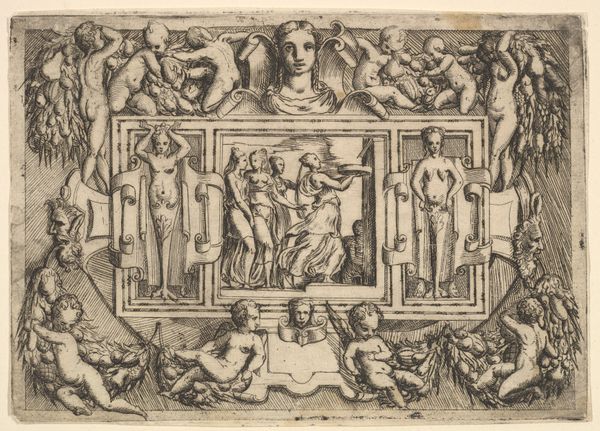
Two decorates Frieze Designs for Cornices, from: Frise pour les architraves, corniches et autres ornaments d'architecture 1666
0:00
0:00
drawing, print, etching, relief, engraving, architecture
#
drawing
#
baroque
# print
#
etching
#
relief
#
men
#
genre-painting
#
history-painting
#
engraving
#
architecture
Dimensions: sheet: 6 7/16 x 9 1/4 in. (16.3 x 23.5 cm) plate: 5 13/16 x 8 11/16 in. (14.8 x 22 cm)
Copyright: Public Domain
Editor: Here we have "Two decorates Frieze Designs for Cornices, from: Frise pour les architraves, corniches et autres ornaments d'architecture" made in 1666 by Jean Le Pautre, housed right here at the Met. The print depicts two ornate friezes filled with figures and motifs. It almost feels like a dream world due to its strange proportions and subjects. How do you approach a work like this? Curator: The charm of this work resides in its intricate arrangement and the meticulous rendering of forms. Note how Le Pautre masterfully employs line weight and density to create a sense of depth and texture, despite the two-dimensionality of the print. Consider, also, the way he divides the composition into distinct registers, each presenting its own set of figural and decorative elements. How does the interplay of these registers affect your interpretation? Editor: It makes me wonder how it would feel to experience the full cornice, the interplay of relief and shadows. It is really hard to discern what the real size of the finished frieze should be. I would also be curious about the placement of the art inside a building! Curator: Indeed. Disregarding the architectural application for a moment, one can consider it a composition in itself, complete and successful in the deployment of artistic resources. This work exhibits an excellent command of formal language. Consider the symmetry, balance, and the careful distribution of light and shadow across the surface, as it invites deeper study of how individual elements function together within the artistic system. Editor: This helps me appreciate how much a piece, even when extracted from its functional context, stands on its own as a carefully calibrated set of artistic decisions. Curator: Precisely. By attending to these formal considerations, we gain insight into the artist's technical prowess, and the artistic vision underlying the work.
Comments
No comments
Be the first to comment and join the conversation on the ultimate creative platform.
